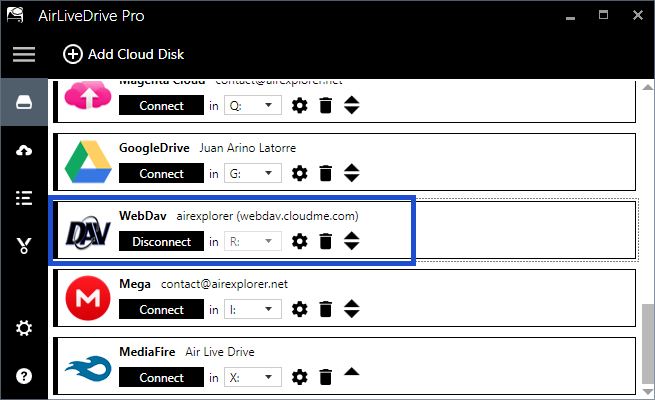

git directories, hidden files, browser data, and email client data. While there are no file type restrictions, pCloud says you may have syncing issues with the following file types. You can copy data from external hard drives and upload folders and files of any size and type to your virtual pCloud Drive, but if you want to upload folders through the web, you’ll need to use Chrome – otherwise, you’ll only be able to transfer individual files. pCloud Drive’s drag-and-drop function makes moving files from your desktop to the virtual drive a seamless process The pCloud Drive links virtual storage directly to your computer so you can move files off your desktop to free up disk space. The drive acts just like any other folder on your computer, so you can simply drag and drop to get organized. You can store and sync files from your computer via the web app and upload photos and videos with the mobile app, but the virtual pCloud Drive is what really impressed me. Windows 7 and later, Mac, Linux, iOS and AndroidĢ56-bit AES, optional private encryption keysĪlthough pCloud has an extensive list of extras, like built-in audio and video players, the option to save your favorite internet content directly to your account with pCloud Save, and filters to quickly search for content by file type, I’m going to focus on the features that make pCloud stand out for me. Let’s take a close look at its features, performance, ease of use, and customer support to see if it’s the right cloud storage solution for you.Ĭontinuous backups, backup from external drive, backup status reports, bandwidth throttling, no offline backup and restore options PCloud has a lot to offer but it also has its drawbacks. Another perk is that you can connect as many devices as you want.


PCloud provides user-friendly access to your data in several ways: there’s a desktop app, a virtual pCloud Drive (more on this later), and iOS and Android mobile apps. There are no unlimited plans with pCloud, but there are unlimited upload and download speeds with no bandwidth throttling, and some great syncing and sharing options. Paid plans are available in monthly, yearly, or lifetime subscriptions and give you more flexibility than most cloud storage services. In terms of storage, pCloud offers a free 10GB plan, and you’ll have to subscribe to a paid plan for more space (that’s capped at just 2TB). In addition to storage, it also offers cloud backup and gives you more security and features than most of the competition. PCloud is a cloud storage service that’s not like most. To continue using your existing Arm-based instances as an Always Free user, before your trial ends, ensure that your total use of OCPUs and memory across all the Ampere A1 Compute instances in your tenancy is within the Always Free limit.User-Friendly Cloud Storage with Plenty of Ways to Access Your Data However, if you have more Ampere A1 Compute instances provisioned than are available for an Always Free tenancy, all existing Ampere A1 instances are disabled and then deleted after 30 days, unless you upgrade to a paid account. After your Free Trial expires, you'll continue to be able to use and manage your existing Always Free resources, and can create new Always Free resources according to tenancy limits. Resources identified as Always Free will not be reclaimed. (Note that reclaimed resources can’t be recovered-they are permanently deleted.) If you do not upgrade to paid by the end of the grace period, your Free Trial service instances and data will be deleted. Your resources will continue to exist for a few days, allowing you to upgrade your account and keep your resources before they're reclaimed by Oracle. You will no longer be able to create new paid resources, but your account will remain active.

When you've reached the end of your 30-day trial or used all your Free Trial credits (whichever comes first), you’ll be notified and will have a grace period of 30 days, starting from the expiration date, to upgrade to paid.


 0 kommentar(er)
0 kommentar(er)
